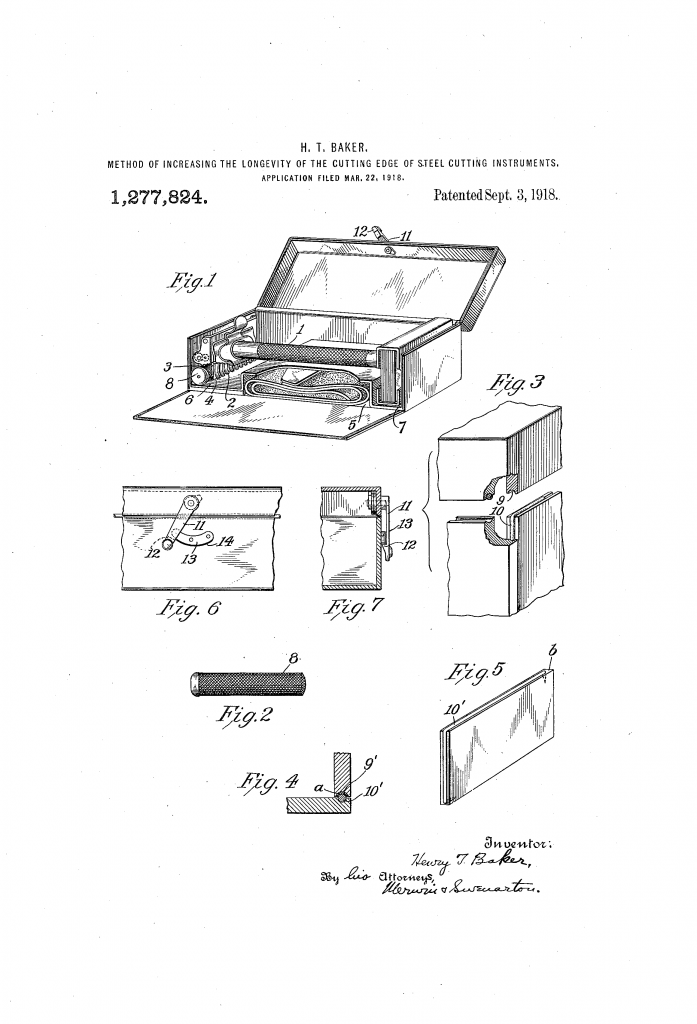Some patents have long titles. Like this one, from 1918. And despite the mighty wordage Henry T Baker used in the title, it comes down to making your blade last longer. And he isn’t the first, nor the last, who wanted to increase the longevity of the cutting edge. Even if most of them were a bit… cranky. Or very cranky. At least Henry didn’t resort to psudo-science to increase the longevity of the blade.
So what did Henry do? He simply found a way to remove moisture.
He came up with a neat little case, capable of holding a razor and spare blades, and placed an absorbent cartridge in it.
Or, as the patent states it;
An absorbent-containing cartrldge 8, preferably elongated and tubular, and also preferably formed. of reticulated fabric, is adapted to lie immediately beneath and in alinement with the cutting edge of said blade.
From US patent 1,277,824
He also specified a particular way of putting the case together, and used a rubber seal to keep moisture out. Nothing revolutionary or weird seen from more than a hundred years hence.
So far, so good. But looking at the drawing, I realized something.

That… is an Autostrop razor. And the Valet Autostrop is a cool razor. And one I would like to have, if I found a reliable source of blades for it.
You can read the whole patent over at Google Patents, as usual.

Pingback: Razor drying container - Wegian WetshavingWegian Wetshaving
Pingback: Method of increasing the longevity of the cutting edge of - Razors n Blades the shave that saves